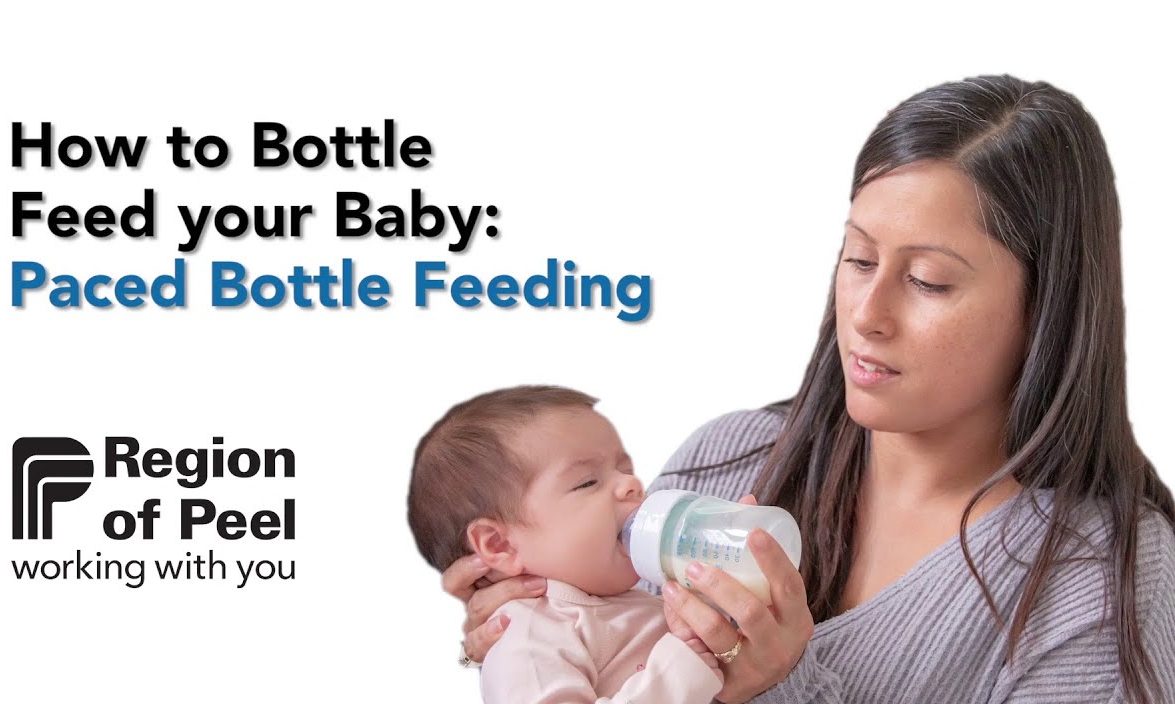Bottle-feeding can be an enjoyable and nurturing experience for both you and your baby, offering a chance to bond while ensuring your little one gets the nutrition they need. However, it’s essential to practice safe and effective bottle-feeding techniques to make sure your baby is feeding properly, developing healthy eating habits, and reducing any potential issues that might arise from improper feeding. One of the most recommended techniques for bottle-feeding is paced bottle feeding. In this article, we will explore what paced bottle feeding is, why it is beneficial, and how to implement it effectively.
What is Paced Bottle Feeding?
Paced bottle feeding is a method designed to mimic the natural rhythm of breastfeeding. Unlike traditional bottle-feeding, where the bottle is tilted at a steep angle and milk is allowed to flow freely into the baby’s mouth, paced bottle feeding encourages the baby to take breaks, manage the flow of milk, and actively engage in the feeding process. This technique helps babies maintain control over their feeding, providing a more comfortable and satisfying experience while promoting proper oral development and reducing overfeeding.
The essence of paced bottle feeding is to allow your baby to “work” for the milk in a way similar to how they would when breastfeeding. It encourages a natural pace by allowing your baby to suck, swallow, and breathe at intervals, preventing them from gulping the milk too quickly or consuming too much at once.
Benefits of Paced Bottle Feeding
There are several benefits to practicing paced bottle feeding:
-
Mimics Breastfeeding: Since paced bottle feeding allows the baby to control the flow of milk, it more closely resembles the natural breastfeeding process. This is particularly helpful if you are transitioning from breastfeeding to bottle-feeding or using both methods in combination (mixed feeding).
-
Prevents Overfeeding: Paced bottle feeding can reduce the likelihood of overfeeding, as it helps the baby recognize and respond to their hunger cues. Babies are encouraged to take breaks during feeding, which gives them a better sense of fullness and prevents them from drinking more than they need.
-
Promotes Oral Development: This feeding method helps strengthen the baby’s oral muscles, as it requires them to suck and swallow in a natural pattern. It can help prevent issues like nipple confusion (when babies struggle to switch between bottle and breast) and supports the proper development of the baby’s mouth and tongue.
-
Reduces Gas and Discomfort: By allowing breaks during feeding and letting the baby pace themselves, paced bottle feeding can reduce the amount of air swallowed, thus decreasing the likelihood of gas and discomfort during and after feeding.
-
Better Bonding: Because paced bottle feeding involves slower, more intentional feeding, it encourages more eye contact and interaction between you and your baby. This allows for a stronger emotional connection during the feeding process.
How to Practice Paced Bottle Feeding
Implementing paced bottle feeding involves a few key techniques that can make a significant difference in your baby’s feeding experience. Here’s how you can get started:
1. Choose the Right Bottle and Nipple
Start by selecting a bottle and nipple that are designed for paced feeding. Look for bottles that have a slow-flow nipple, which allows the milk to come out more slowly and gives your baby the chance to control the pace of the feeding. Many bottles are specifically marketed for paced bottle feeding and come with nipples that offer a more natural flow rate.
2. Hold Your Baby in an Upright Position
Instead of lying your baby flat on their back as you would in traditional bottle feeding, try holding them more upright (close to a 45-degree angle) during the feeding. This position allows your baby to have better control over the milk flow and encourages a more natural suck-and-swallow pattern.
3. Position the Bottle Horizontally
Rather than tilting the bottle upwards, position it horizontally, with the nipple just slightly touching your baby’s lips. The milk should not flow freely. Your baby will need to suck on the nipple to get the milk to come out, which encourages them to work for the milk and drink at their own pace.
4. Allow Your Baby to Take Breaks
Paced bottle feeding involves giving your baby regular breaks during feeding. After a few sucks or swallows, tilt the bottle upwards slightly to stop the flow of milk, and let your baby pause to breathe, swallow, and re-establish their sucking rhythm. This mirrors the natural breastfeeding experience, where babies take breaks and control the flow of milk on their own.
5. Watch for Hunger Cues
Pay attention to your baby’s hunger cues to avoid forcing them to eat when they’re not hungry. Babies will show signs when they need a break, like pulling away from the bottle, turning their head, or fussing. It’s important to respect these signals to prevent overfeeding and ensure a comfortable feeding experience.
6. Encourage Active Feeding
Encourage your baby to actively engage in the feeding process. Let them have control over the milk flow by allowing them to suck at their own pace and manage the bottle. If the milk starts to flow too quickly or they become distracted, gently pull the bottle away to give them a moment to regroup.
Common Mistakes to Avoid
While paced bottle feeding is a gentle and effective method, there are a few mistakes to avoid:
-
Forcing the Bottle into Baby’s Mouth: Never force the bottle into your baby’s mouth or rush them through the feeding process. Let them decide when to start and stop.
-
Not Paying Attention to Hunger Cues: It’s crucial to watch for signs of fullness or discomfort during feeding. Overfeeding or not stopping when your baby signals they are full can lead to issues like spitting up or discomfort.
-
Choosing the Wrong Nipple Flow: If the nipple flow is too fast, your baby may struggle to manage the milk. Choose a nipple that provides a slow, controlled flow suitable for paced bottle feeding.
Conclusion
Paced bottle feeding is an excellent method to ensure your baby has a positive and healthy feeding experience. By allowing your baby to control the flow of milk and take breaks when necessary, you’re helping them develop good eating habits, prevent overfeeding, and foster a strong bond during feeding times. While it may take a little practice to get the technique just right, the benefits are well worth the effort. Just remember to be patient, watch for your baby’s cues, and enjoy this special time together.



